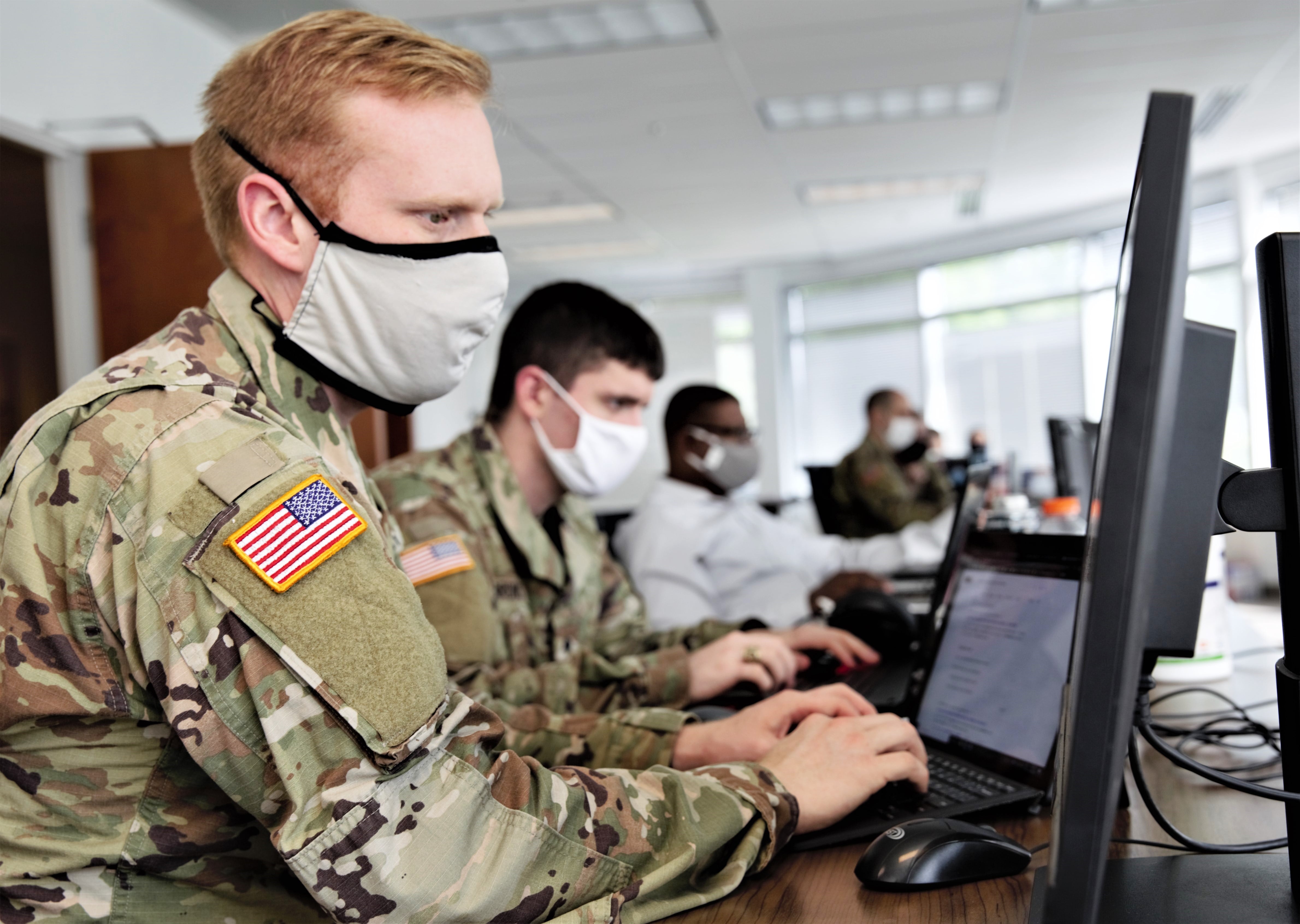WASHINGTON — The commander of U.S. Cyber Command hinted Friday that his cyber force could soon see a growth in personnel.
“I would anticipate that as we lay out the case, we have to look at some critical elements that will influence the future size of the cyber mission force, now 133 teams,” Gen. Paul Nakasone said at a House Armed Services Cyber, Innovative Technologies and Information Systems Subcommittee hearing.
Some members of Congress are worried that the cyber mission force — designed and built almost 10 years ago — does not reflect the current dynamic state of cyberspace.
Members questioned Nakasone last year on the topic, and he said Cyber Command would gather information for Pentagon leaders to make appropriate staffing decisions.
In fact, the congressionally mandated Cyberspace Solarium Commission recommended the Department of Defense create more cyberwarriors. That provision made it into last year’s National Defense Authorization Act in the form of providing a comprehensive assessment cyber operations forces as part of changes to the department’s quadrennial cyber posture review.
Nakasone told the committee today that he does have the data available to make such a determination.
“To prepare for the approved growth in the CMF, we will enhance our control over resources for the force, improve its readiness (including the metrics we require in doing so), and consolidate CMF training,” Nakasone wrote in congressional testimony provided to the Senate Armed Serves Committee in March and to the House Armed Services Committee on Friday. “Recent demand across DoD has demonstrated that the original 133 teams in the CMF are not enough. The strategic environment has changed since the original CMF was designated in 2012. Added forces will ensure USCYBERCOM can fulfill its responsibility as both a supported and a supporting command.”
A Department of Defense spokesperson told C4ISRNET that those specific numbers have not been released publicly.
Currently, there are 6,187 authorized positions for the cyber mission force with 238,000 personnel in the DoD’s cyberspace operations forces, which includes the cyber mission force, Cyber Command subordinate command elements, cybersecurity service providers, special capability providers, and specialty units, Nakasone said, drawing from the 2018 cyber posture review.
Those cyber mission force teams have undergone changes over the years to adapt to threats, allowing the freedom for commanders to task organize their teams as necessary. For example, in Nakasone’s written testimony, he noted how several teams were initially aligned to the counterterrorism fight, but with the department’s shift toward state actors, Cyber Command has realigned some units to focus on key nations.
One such example is its counter-Islamic State group task force, Joint Task Force-Ares. Cyber Command shifted the majority of the task force to focus more on nation-state actors, particularly in the Indo-Pacific region.
Nakasone told representatives that there are a few other factors that will affect the growth of the cyber mission force; chief among them is the growing importance of space.
The creation of the Space Force and Space Command adds more ground for Cyber Command to cover. The way the cyber force is staffed within the DoD is that each of the services are responsible for providing a set number of teams — offensive, defensive and intelligence/support teams — to the joint cyber mission force.
In turn, these teams are led by a Joint Force Headquarters-Cyber, which are headed by each of the service cyber component commanders, who them plan, synchronize and conduct operations for the combatant commands to which they’re assigned. The 16th Air Force and its Joint Force Headquarters-Cyber component takes responsibility for Space Command, which is in the process of creating its own Joint Cyber Center to create a tighter linkage with Cyber Command.
While all the services provide an allotted number of forces to Cyber Command through the cyber mission force, officials to date have said there are no plans for Space Force to provide cyber mission force contributions. Instead, officials have noted that they need specialized, serviced-retained cyber personnel to defend their critical assets, such as ground stations, from cyberattacks.
Adversaries are now using cyberspace in ways that weren’t necessarily imagined when the force was initially conceived. Namely, they’ve discovered they can conduct operations below the threshold of war to undermine U.S. national security and not draw a significant response.
“We have to have that balance of not only, what we are going to support our fellow combatant commands if conflict was to break out, but also if our adversaries are operating below the level of armed conflict every single day, what type of force do we need to be able to ensure that we can counteract that,” Nakasone said.
Mark Pomerleau is a reporter for C4ISRNET, covering information warfare and cyberspace.








